Essay: Real Paintings and Fictional Painters (Part IV)
Nostos is a weekly newsletter about making a home at the intersection of art and life. Essays is an occasional column that teases out in greater depth how family life appears in culture.
Earlier this winter I was lucky to catch the retrospective of Suzanne Valadon at the Centre Pompidou on what I imagine will be my last visit to that museum until it reopens in 2030, god willing. It was a rare personal trip to Paris outside of my annual fall pilgrimage for the art fairs. This time it was romance that brought me there, a fact that everyone I told almost uniformly agreed was the best reason to visit their city. So I was in a certain state of mind as I stored my dripping umbrella and made my way up through the escalator tubes to the special exhibition galleries, making my way between the spaces of the in-between, endings and beginnings, hellos and goodbyes and all of that. I had never heard of Suzanne Valadon and had no idea what to expect, other than it came highly recommended, but there is a certain freshness to seeing something in the right company, in holding one’s eyes open out of curiosity and hope, and I was rewarded immediately. From the opening salvo of the exhibition, Suzanne’s paintings assert themselves with the immediacy of gestural brushwork and an imposing weight of meaning and consequence.
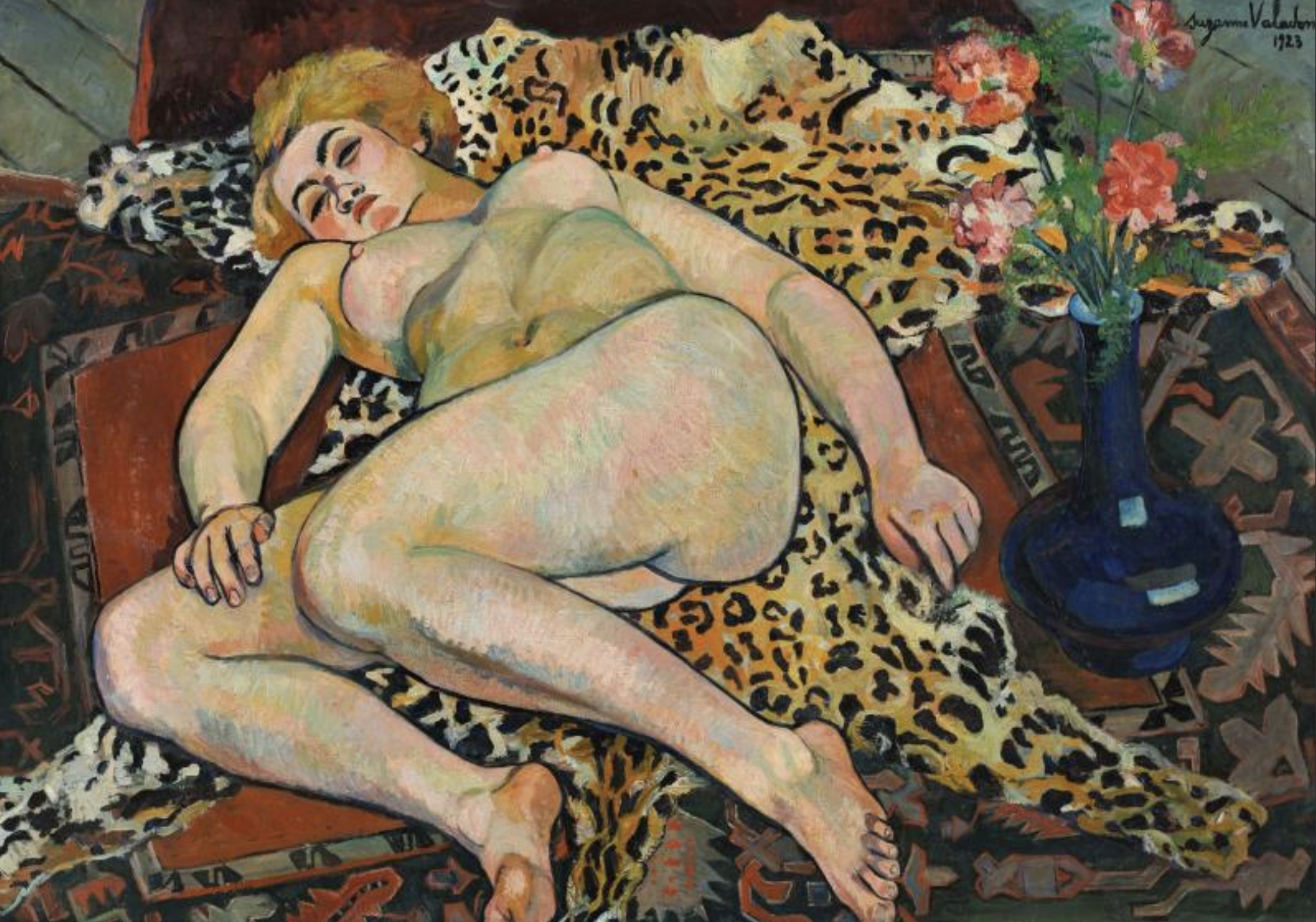
Although I am no expert, assuming that some readers will be as unfamiliar with her work as I was, I will share a brief biographical sketch: Suzanne was born Marie-Clémentine Valadon in 1865 to a single washerwoman in Montmartre, and came into contact with art when she began modeling (among other odd jobs) at the age of 15 for Henri de Toulouse-Lautrec, who gave her her nickname—after the biblical Susanna. She also drew, and received encouragement from Toulouse-Lautrec and Degas. Becoming a single mother herself at the age of 18, she continued living with her mother, and developed a practice of portraiture based on her mother and son, as well as lovers and friends from a wider circle as she rose in social status through the reception of her work.
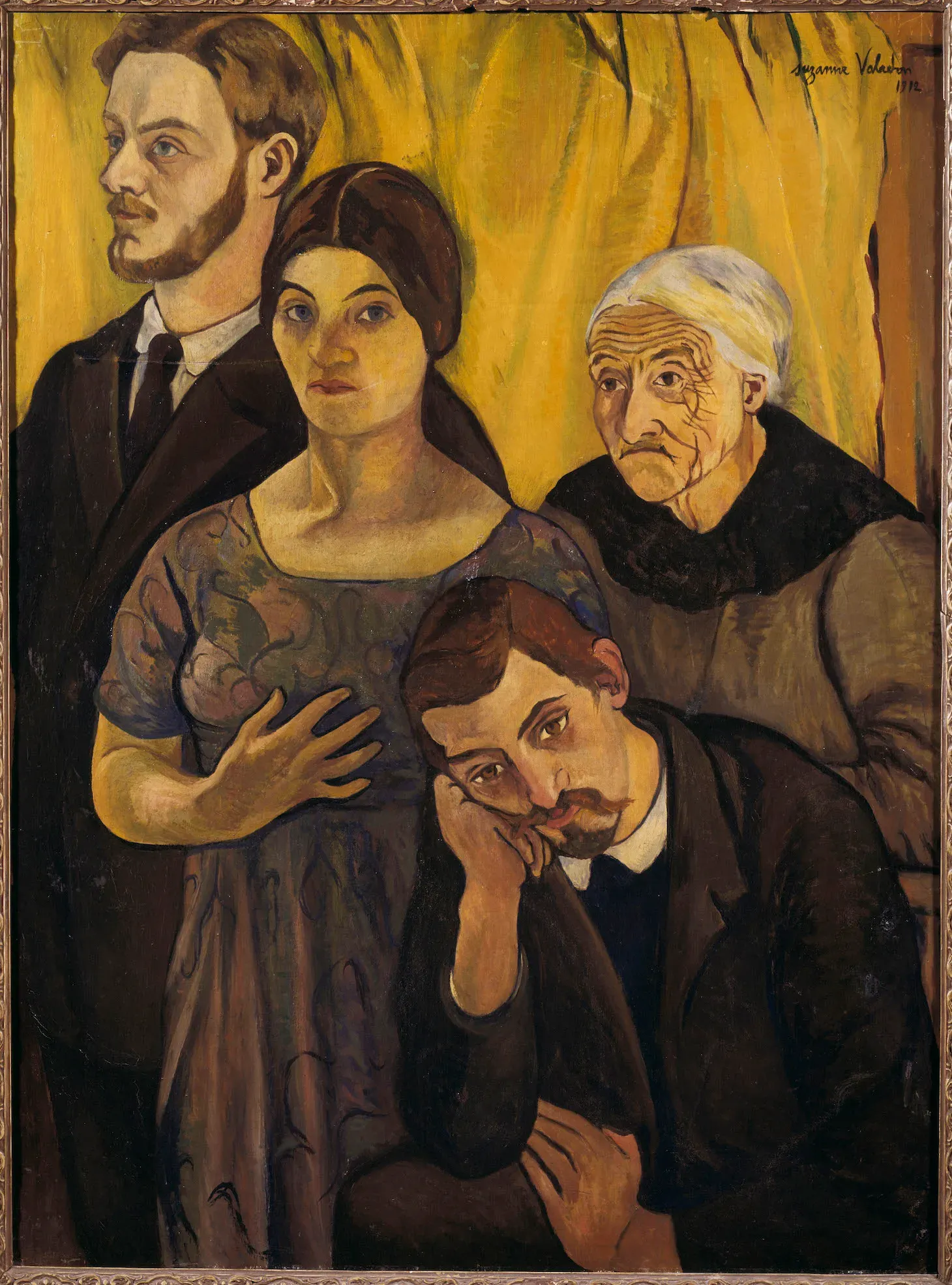
It should be clear from this description alone how Suzanne’s work fits into the story I have been telling about how the life of the family fits into and alongside the life of the artist. With Adam et Eve (1909) she became, some say, the first woman to paint a full-frontal male nude; her new husband guides her hand towards the forbidden fruit. Portraits de famille (1912) pictures her surrounded by her mother (whose face is deeply scarred with wrinkles here and nearly everywhere she appears), her son (dreamy and erect), and her second husband (resigned; at peace). One of my favorite pairings in the exhibition captures the arc of childhood: Marie Coca et sa fille Gilberte (1913) finds Suzanne’s grandniece with a doll on her lap, leaning against her mother’s legs. Later, in La Poupée Délaissée (1921), the girl is grown, turning away from her mother and absorbed in her own reflection in a handheld mirror. The titular doll—the same one from eight years earlier—rests on the floor. Suzanne had a special love for mirrors, both handheld and wall-mounted, and for boudoir scenes, and in particular for the twisting and stepping poses of getting into and out of the bath. (See La Petite Fille au miroir, 1909.) She is, I believe, the patron saint of the rear three-quarter-angle nude.
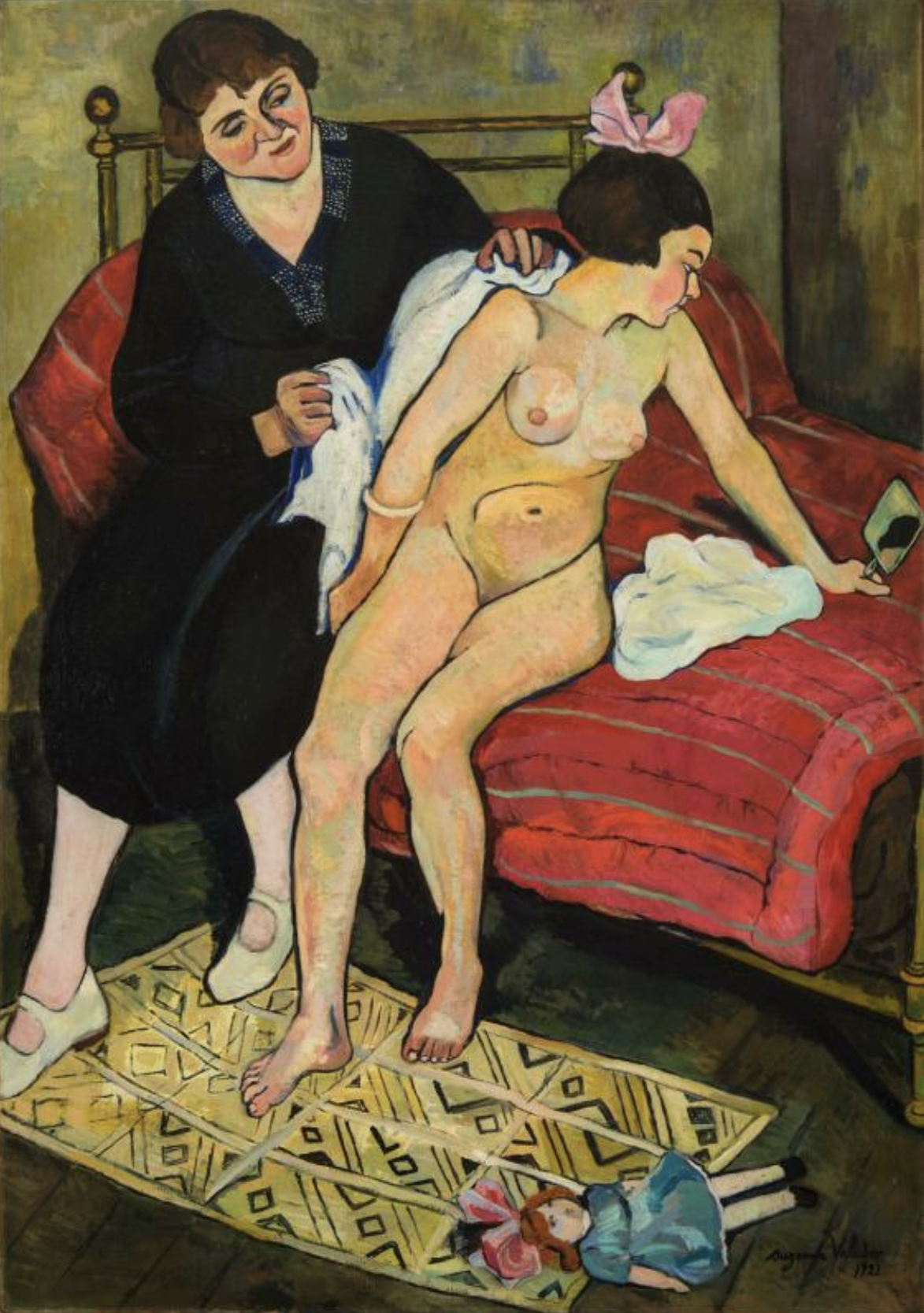
Suzanne made what I consider her best paintings in her fifties and sixties, in the two decades prior to her death in 1938. The Pompidou exhibition opens with La Chambre bleue (1923), one of several pictures that are so stupidly brilliant that they could pull the wall straight down into the floor. A heavyset woman in a pink camisole and striped green pajama pants rests on one elbow, books at hand, an unlit cigarette between her lips. The bedspread is Matisse and the wall behind is Joan Mitchell. From the same year, Catherine nue allongée sur une peau de panthère (1923) has a reclining nude on a leopard skin over a rug, pink poppies in a blue glass vase perched perilously close to languorously draped fingers. The rainbow skin of this buttock slam in the center of the frame—it contains the universe.
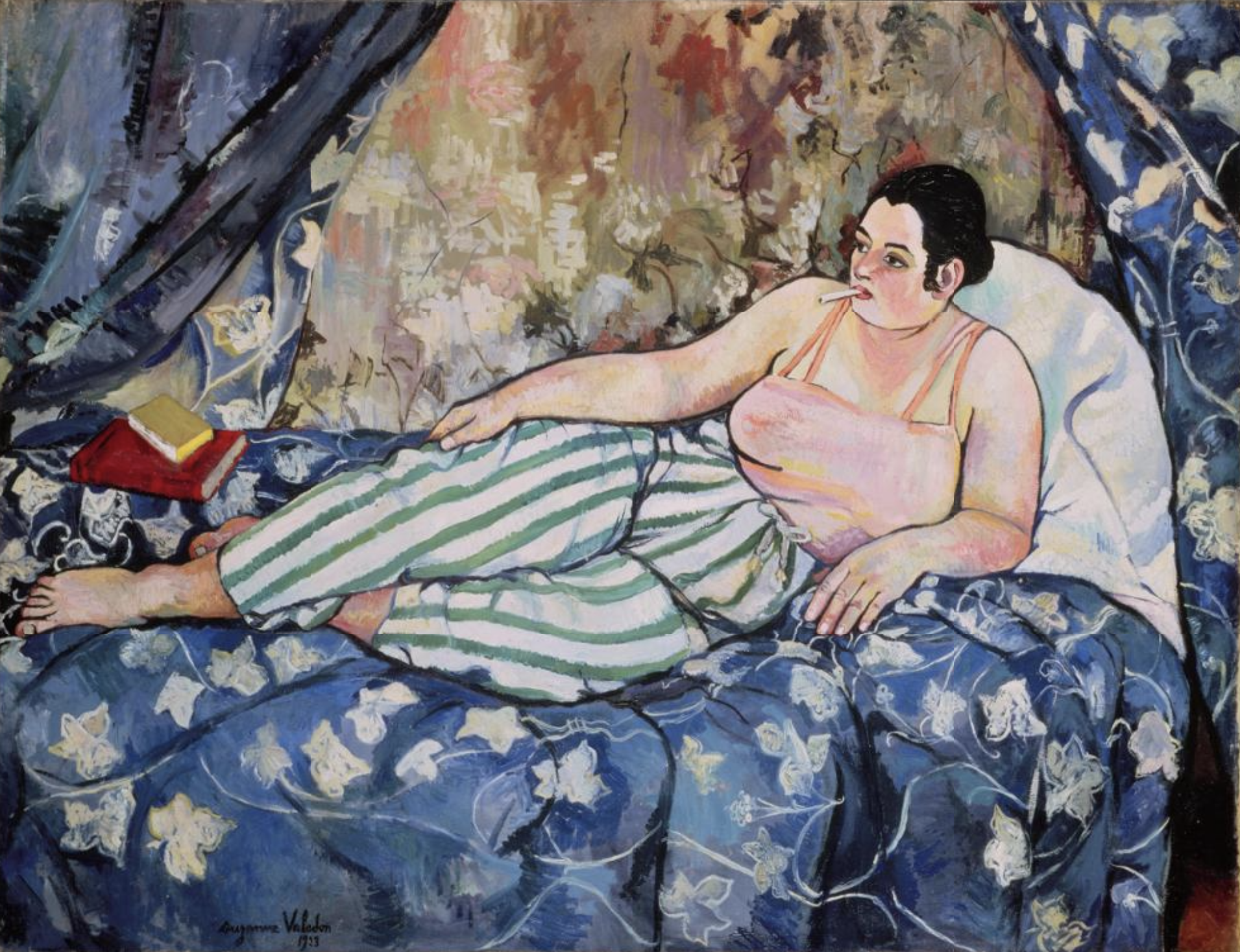
In a series of self-portraits made when she was 62 or 63, Suzanne depicts herself in what I can only describe as the harsh light of loving self-acceptance. She has none of the luscious skin finish of her nudes, and none of the cinematic airs of some of her other portraits. She is not young, but she is not old—at least she has far fewer wrinkles than she gave to her mother earlier in her career. My favorite is Autoportrait aux sens nus (1931). At this point she has been painting herself in the nude for decades, and yet it can’t have been common for a woman of her age to look back at the viewer so defiantly dignified, so much a part of herself. In the way she handles the skin of her left shoulder, partially in the shadow of her face, I see something of Celia Paul’s palette. And, of course, this brings us to Alice Neel.
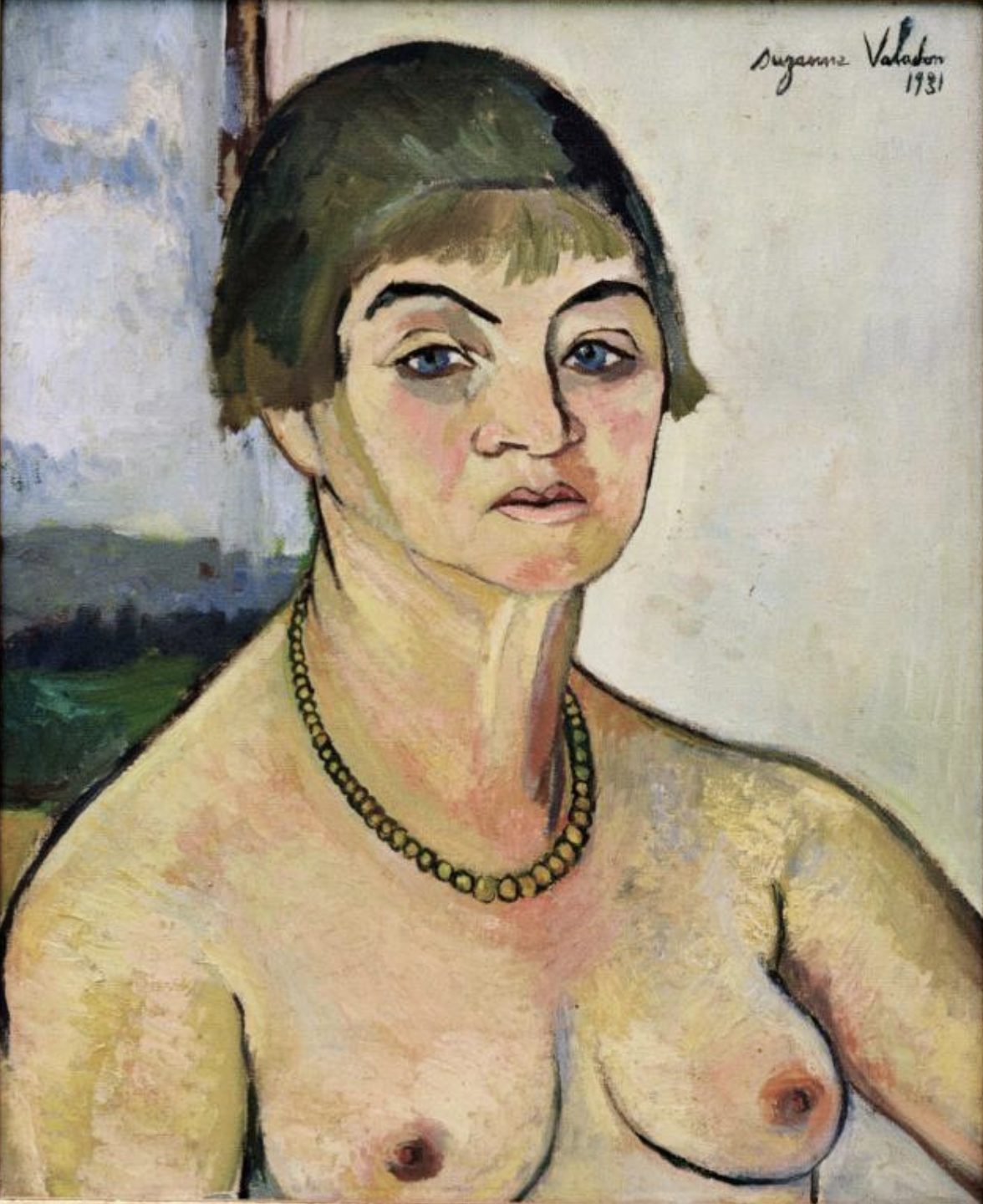
I am hardly the first to notice the shared sensibilities between Suzanne Valadon and Alice Neel. First and foremost, the thickness of line with which they both tend to outline the bodies of their sitters; it is visually striking and makes for a unique conversation across time between these two women. And of course, the empathy for affect and feeling in the body of the sitter, particularly in the seated domestic interior portraits that form such a significant portion of both of their work. If there is one significant point of departure, however, it is in Suzanne’s sumptuous attention to the textures and patterns of her interiors. In Alice’s pictures, everything beyond the person—sometimes everything beyond the face, even everything beyond the eyes—fades into irrelevance. For Suzanne, a person must be situated: placed within the context of their costume, of the furniture, of the room. We see the same couch, the same throw in many pieces, and we see her own environments shifting and evolving over time. Where Alice pushes back at the encroaching domestic sphere (a topic I will turn to in the next part of this essay), Suzanne indulges it in all its messiness and improprieties, painting a universe perfectly parallel to the escaping tulips of Dora Carrington’s still life.